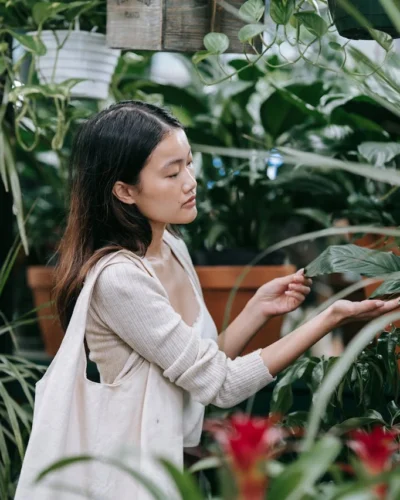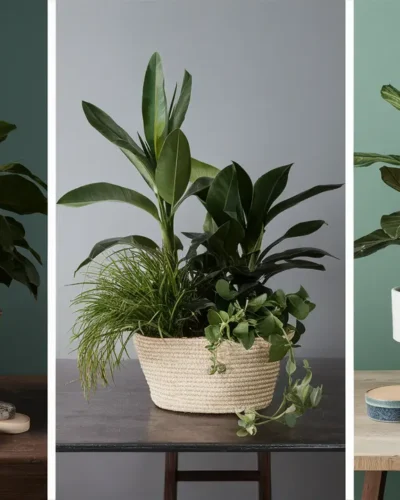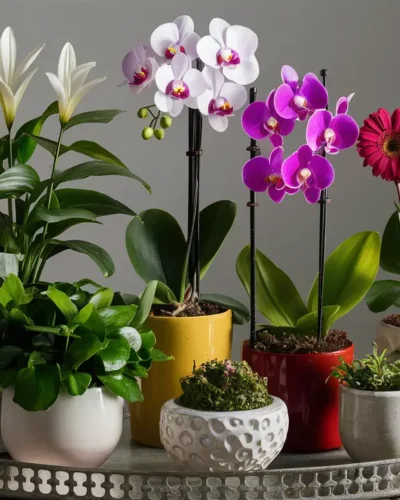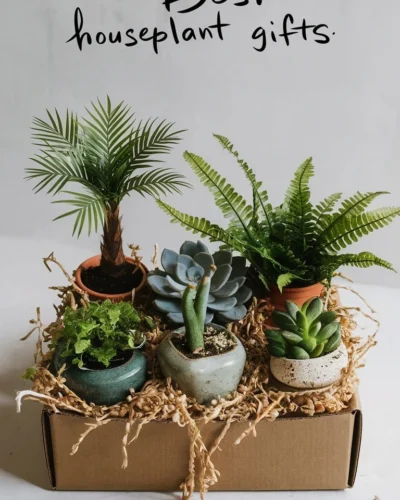The B&Q Plant Powerhouse: What You’ll Find on the Shelves
From Petunias to Palms: A B&Q Plant Inventory
So, you’re thinking about sprucing up your garden or indoor space with some new greenery, huh? B&Q’s a pretty common first stop for many plant enthusiasts, and for good reason. They boast a pretty extensive selection, ranging from humble bedding plants perfect for a burst of summer color, to more sophisticated indoor plants that could bring a touch of the jungle into your living room. You’ll find everything from vibrant petunias ready to burst into bloom to majestic palms that’ll add some serious tropical vibes to your home. But how good are they, really? Let’s dive in.
Table of Content:
- The B&Q Plant Powerhouse: What You’ll Find on the Shelves
- From Petunias to Palms: A B&Q Plant Inventory
- Price Points & Plant Variety: Something for Every Budget?
- Seasonal Specials & Surprise Finds: Snagging a Bargain Bloom
- Overall Quality: What to Expect
- FAQs
- Conclusion
- Decoding the B&Q Plant Quality Conundrum
- Root to Tip Inspection: What to Look For Before You Buy
- The Health Check: Spotting Potential Problems Early
- The Survival Test: How to Nurture Your New B&Q Beauties
- B&Q vs. Independent Garden Centres: A Plant-Off!
- Price vs. Premium: Is Quality Worth the Extra Spend?
- Plant Selection Showdown: Niche Finds vs. Mainstream Blooms
- Customer Service & Expertise: Getting the Growing Advice You Need
- Beyond B&Q: Tips for Thriving Plants
- Aftercare Essentials: The Secret to Long-lasting Blooms
- Troubleshooting Troubles: Dealing with Common Plant Problems
- Community Growing: Sharing Tips and Success Stories
- The B&Q Plant Verdict: A Gardener’s Perspective
Bedding Plants: A Riot of Colour
B&Q’s bedding plant selection is usually pretty impressive, particularly during peak seasons. Think geraniums, pansies, petunias—all the classic choices, and usually in a wide variety of colours and sizes. They’re generally well-priced, making them a popular option for those looking to add a pop of colour to their gardens without breaking the bank. However, it’s worth noting that the quality can vary depending on the season and specific plant; sometimes you get lucky and snag some exceptionally healthy specimens, other times… well, let’s just say some require a little extra TLC.
Indoor Plants: From Easy Care to Exotic
Beyond the typical seasonal fare, B&Q also carries a decent selection of houseplants. They cater to various levels of experience, so whether you’re a seasoned plant parent or a complete beginner, you’ll likely find something that piques your interest. They’ll often stock popular and easy-to-care-for options like snake plants, ZZ plants (known for their nearly indestructible nature!), and spider plants – perfect for those who might struggle to keep their green babies alive. But they also occasionally have a more varied range, including more demanding species. However, remember to always check the plant’s health before purchasing – look out for signs of pest infestations, wilting, or unusual discoloration. A little bit of pre-purchase inspection never hurt anyone!
Trees and Shrubs: Larger Plants for Larger Spaces
If you’re looking for something a little bigger, B&Q often stocks a range of shrubs and small trees, perfect for adding structure and height to your garden. They’re a great option for creating hedges, adding privacy, or simply bringing a bit of architectural interest to your outdoor space. Just be prepared for a slightly higher price point, as these plants naturally cost more than smaller bedding plants. Again, inspect the plant carefully before purchasing – look for any signs of disease or damage to the trunk or branches.
Price Points & Plant Variety: Something for Every Budget?
One of B&Q’s biggest draws is their competitive pricing. They certainly offer a range to suit different budgets. While you might find some premium options, many plants are reasonably priced, especially during sales or promotional periods. This makes them a really accessible option for gardeners on a budget. However, remember that lower prices can sometimes mean a smaller variety of choices. The selection can sometimes be more limited compared to specialist nurseries. It’s all about striking a balance between price and choice!
Seasonal Specials & Surprise Finds: Snagging a Bargain Bloom
B&Q often runs seasonal promotions, which is great news for plant lovers on the lookout for a bargain. Keep an eye out for discounts on seasonal bedding plants (especially after the peak season when they might be trying to clear stock) or special offers on larger plants and trees. Sometimes you can stumble upon some real hidden gems – a healthier plant than expected, or a unique variety you weren’t even looking for! You might need to check their website or visit your local store frequently to snag the best deals.
Overall Quality: What to Expect
The quality of plants at B&Q can be a bit of a mixed bag. While they generally offer healthy and well-maintained plants, it’s not uncommon to find some that are slightly less vibrant or show minor signs of stress. It’s crucial to carefully inspect each plant before you buy, checking for pests, diseases, or signs of wilting. Don’t be afraid to ask a member of staff for assistance if you’re unsure about a particular plant’s health. Remember, a little bit of pre-emptive care goes a long way!
FAQs
- Q: Are B&Q plants guaranteed? A: While B&Q offers returns and exchanges, a specific guarantee on plant survival might not be explicitly stated. It’s essential to carefully inspect your plant upon purchase.
- Q: What kind of plant care advice do they offer? A: B&Q typically provides some basic care instructions either on plant tags or through staff, but for in-depth advice, it’s best to consult other resources.
- Q: Are B&Q plants suitable for beginners? A: Yes, B&Q offers a range of easy-care plants ideal for beginners. However, proper plant care research is always advised, regardless of your experience.
- Q: When is the best time to buy plants at B&Q? A: Sales and promotions often occur around peak seasons, but you can also find good deals throughout the year.
Conclusion
Ultimately, the quality of plants at B&Q depends on a number of factors, including the season, specific plant species, and even the individual store. While they offer a wide selection at competitive prices and often have seasonal bargains, it’s vital to thoroughly inspect your chosen plants before purchasing them. By taking a little time to assess the health of the plant, you can significantly increase your chances of bringing home happy and thriving additions to your garden or home. So, head over to your local B&Q, explore their offerings, and happy gardening!
Decoding the B&Q Plant Quality Conundrum
Root to Tip Inspection: What to Look For Before You Buy
So, you’re ready to add some green to your life, huh? That’s awesome! But before you get swept away by the lush displays at B&Q, it’s worth knowing how to pick out the healthiest plants. Trust me, a little detective work upfront saves heartache (and money!) later. You wanna get a plant that’s gonna *thrive*, not just survive, right?
Leaf Check: A Visual Feast or Famine?
- Look for vibrant, healthy leaves. Avoid plants with yellowing, browning, or wilting leaves. Those are major red flags, my friend. Think of it like this: if they look sad now, imagine how sad they’ll look in a few days.
- Inspect the leaves closely. Check for pests (those little buggers can wreak havoc!). A quick once-over will help you avoid bringing unwanted houseguests home.
- Feel the leaves. Are they firm and plump, or soft and droopy? Firm and plump is what you’re after. Droopy leaves usually indicate a thirsty plant or root issues.
Stem Strength: Sturdy or Wobbly?
A healthy plant boasts strong, upright stems. Avoid plants with weak or spindly stems that are leaning precariously. A little bend is fine, but anything that looks seriously out of whack might be a signal of stress.
Soil Situation: Super Soil or Soggy Mess?
Gently check the soil. It should be moist but not waterlogged. Soggy soil is a breeding ground for problems, and that’s the last thing you need. Waterlogged soil can rot the roots of even the hardiest houseplant.
Root Prowess: A Peek Beneath the Surface (Sometimes)
Depending on the pot size and the type of plant, you may be able to get a glimpse of the roots. Ideally, you should see healthy roots, not circling the pot, tightly bunched, or overly long. Roots that circle the pot are a sign that the plant is root-bound and needs repotting – a good thing to check, even if the leaves look healthy.
The Health Check: Spotting Potential Problems Early
Okay, you’ve found a few potential candidates. Now’s the time to be extra eagle-eyed. It’s a bit like a quick health check for your potential new houseplant pal, to see if it’s going to be a long-term friendship or a short-lived fling.
Pest Patrol: The Enemy Within
Even the best-looking plants can harbor hidden pests. Use a magnifying glass to check for spider mites, aphids, mealybugs, or other unwelcome visitors. A little bit of pest control now can help you to avoid a bigger problem later.
Disease Detection: Early Warning Signs
Look for signs of disease, such as unusual spots, discoloration, or wilting. These aren’t necessarily deal-breakers, but it’s smart to know what to look for.
Root Rot Risks: A Sneaky Culprit
Root rot is a serious issue, often caused by overwatering. Check for mushy or blackened roots (if visible). Seriously, run away from plants with those symptoms! You don’t want to bring home a plant with root rot.
Light Needs: Matching the Plant to Your Home
Consider where you’ll place the plant in your home. B&Q often has signs indicating light preferences, but it’s always a good idea to double-check online resources to be sure.
The Survival Test: How to Nurture Your New B&Q Beauties
You’ve chosen your plant! Congrats! Now, how do you give it the best shot at a long and happy life? Think of this as the plant’s induction period – you’re prepping it for a move into its forever home.
The Acclimation Period: Easing into a New Home
When you get your new plant home, don’t immediately repot it or change its environment drastically. Give it a week or two to adjust to its new surroundings. Think of it as a mini-vacation for your plant after its journey from B&Q.
Watering Wisdom: The Golden Rule
Water your plant thoroughly when the top inch of soil is dry, but avoid overwatering. Overwatering is one of the most common causes of plant death. It’s easy to think that more water is better, but this is simply not the case!
Feeding Frenzy: Nourishment for Growth
Use a balanced liquid fertilizer according to package directions during the growing season (spring and summer). Avoid over-fertilizing, as this can harm your plant. That might seem a little counterintuitive, but too much of a good thing can do some real damage.
Sunlight Savvy: Finding the Perfect Spot
Place your plant in a location with the appropriate amount of sunlight. Too much sun can scorch leaves, while too little can lead to weak growth. This is where that research before buying will really pay off.
Repotting Ritual: When It’s Time for a Change
Eventually, your plant may outgrow its pot. When this happens, repotting is essential for its health. Repotting gives your plant plenty of room to spread its roots and grow. Plenty of resources are available online (like this one) to help you through this process.
Pest and Disease Prevention: Staying Ahead of the Game
Regularly inspect your plants for pests and diseases. Early detection is key to preventing major problems. You’ll want to stay ahead of the game. Prevention is better than cure!
B&Q vs. Independent Garden Centres: A Plant-Off!
Price vs. Premium: Is Quality Worth the Extra Spend?
Okay, let’s talk brass tacks: price. B&Q, being a massive retailer, generally offers lower prices on common plants. You’ll find a decent selection of everyday blooms and shrubs at prices that won’t break the bank. Think of it as your trusty, budget-friendly option for basic gardening needs. But hey, you get what you pay for, right? Sometimes those lower prices reflect slightly less robust plants – maybe a bit smaller, or not quite as healthy-looking as their pricier counterparts.
Independent garden centers, on the other hand, often offer a premium experience. While you’ll likely pay more for your plants, you’re usually getting a higher quality specimen. These plants are often grown locally, nurtured with care and attention, resulting in heartier, more established plants that are primed for success in your garden. It’s like the difference between a mass-produced T-shirt and a beautifully tailored garment – one’s practical, the other’s an investment.
The Price Breakdown: A Case Study
Let’s say you’re after a lavender bush. At B&Q, you might find a smaller, younger plant for around £5. At a local independent garden center, you might find a larger, more established plant for £10-£15. The independent center’s plant may thrive more easily, needing less care and potentially living longer, making it a more worthwhile investment in the long run. It really boils down to your priorities – immediate affordability versus long-term value.
Beyond the Price Tag: Hidden Costs
Don’t forget about potential hidden costs! While B&Q’s initial price might seem appealing, you might need to spend more on additional care products down the line to help those potentially less healthy plants thrive. Independent centers sometimes offer advice and specialized products tailored to your specific plant needs, potentially saving you money on unnecessary treatments or replacements.
Plant Selection Showdown: Niche Finds vs. Mainstream Blooms
This is where things get really interesting. B&Q boasts a wide variety of common plants, perfect for those basic gardening needs. If you’re looking for standard bedding plants, popular herbs, or common shrubs, you’ll probably find everything you need there. It’s convenient, but it’s not exactly thrilling for the plant enthusiast.
Independent garden centers, however, frequently offer a wider and more specialized selection. They often carry unusual varieties, rare plants, and unique cultivars that you’d struggle to find at a larger retailer. Think heirloom tomatoes, specific types of roses, or rare succulents – the kind that make your plant-loving heart sing. It’s like the difference between shopping at a big box store versus a specialist boutique – one’s practical, the other’s delightful.
The Rare Plant Factor: A Search for the Unique
For example, finding that particular type of clematis or that unusual shade of hydrangea? Good luck with that at B&Q. Chances are much better at a local independent garden center. They cater to a more discerning customer base and happily offer advice on how to best care for those more unique plants.
Supporting Local: The Eco-Friendly Option
Choosing independent centers often means supporting local growers and businesses, often leading to plants more suitable to your local climate and conditions. Plus, it’s just good for the community!
Customer Service & Expertise: Getting the Growing Advice You Need
Now, this is a big one. B&Q staff are generally friendly and helpful, but their expertise may be limited to basic gardening knowledge. If you’ve got a specific question about a particular plant or need in-depth advice, you might find yourself struggling to find the answers you need.
On the other hand, independent garden centers are often staffed by passionate gardeners and horticulturalists. They’re a goldmine of knowledge, happy to help you choose the right plants for your garden, and provide expert advice on planting, care, and pest control. Think of them as your friendly neighborhood plant whisperers.
The Knowledge Gap: Seeking Expert Advice
Need help identifying a plant disease? Or perhaps you’re struggling with a fussy orchid. Independent centers are your go-to. You’ll get more tailored advice, maybe even a personalized care plan for your plants. B&Q staff, while generally helpful, can’t quite match that level of specialized knowledge.
Building Relationships: Beyond the Transaction
You might find that you develop a genuine relationship with the staff at your local independent center. They’ll get to know you, your garden, and your plant preferences, providing ongoing support and guidance well beyond your initial purchase. It’s a community feel – a far cry from the somewhat impersonal experience at a large retailer.
Beyond Plants: Adding Value
Many independent garden centers also offer additional services, like workshops, talks, and even plant consultations. It’s not just about buying plants – it’s about a holistic approach to gardening, and a chance to learn and connect with other plant enthusiasts. This added value is certainly something you won’t usually find at B&Q.
Beyond B&Q: Tips for Thriving Plants
Aftercare Essentials: The Secret to Long-lasting Blooms
So, you’ve brought your new houseplant home – congrats! But the journey doesn’t end at the checkout. Giving your leafy friends the best possible aftercare is key to their long-term happiness and yours, frankly. Think of it like this: you wouldn’t just buy a fancy car and leave it to rust, would you? Same goes for your plants!
Watering Wisdom: Finding the Goldilocks Zone
One of the biggest mistakes newbie plant parents make? Overwatering. It’s a real killer. Before you even think about reaching for the watering can, check the soil moisture. Stick your finger a couple of inches down; if it’s dry, then water thoroughly. If it’s still damp, hold off. Overwatering leads to root rot – yuck! Underwatering, on the other hand, leads to wilting and unhappy plants. See? It’s a delicate dance.
The frequency of watering depends entirely on the type of plant, the size of the pot, and the environment. A plant in a small pot in a sunny spot will dry out faster than a larger one in a shady corner. It’s all about observation, my friend! Don’t be afraid to get your hands dirty and learn what works best for your specific plants.
Light Levels: Shining a Light on Success
Light, light, glorious light! It’s the lifeblood of most houseplants. But different plants need different amounts. Low-light champions like ZZ plants (learn more about ZZ plants here) are happy in dimly lit corners, while sun-worshippers like succulents need plenty of direct sunlight. Check your plant’s care instructions to ensure you’re giving it just the right amount of sunshine.
Potting Perfection: Giving Your Plants Room to Grow
As your plants grow, they might outgrow their pots. A root-bound plant is a stressed plant. Repotting into a larger pot with fresh, well-draining potting mix provides ample space for root development and nutrient uptake. Don’t forget to carefully remove the plant from its old pot and check the roots for any signs of rot before repotting it.
Fertilizing Fun: Nourishing Your Green Friends
Just like us, plants need nutrients to thrive. A balanced liquid fertilizer diluted to the correct strength can work wonders. Follow the instructions on the fertilizer packaging carefully, as over-fertilizing can be just as harmful as under-fertilizing. Generally, you should fertilize your plants during their growing season (spring and summer). Remember though, some plants prefer not to be fertilized at all, so read up on your chosen plants to make sure!
Troubleshooting Troubles: Dealing with Common Plant Problems
Even with the best care, plants can sometimes encounter problems. Knowing how to identify and address these issues is crucial for keeping your plants healthy. Let’s dive into some common plant woes:
Pests! Eek!
Ugh, pests. They’re a common nuisance for houseplant owners. Inspect your plants regularly for signs of infestation, such as tiny insects, webbing, or discoloration. If you find any unwelcome guests, act fast! There are numerous organic and chemical pest control options available (learn about spider mites here). Early detection is key to preventing a major infestation.
Disease Detectives
Plant diseases can manifest in various ways, including leaf spots, wilting, and discoloration. Good sanitation practices – such as cleaning your tools and avoiding overhead watering – can help prevent the spread of diseases. If your plant is looking unwell, you should isolate it from other plants and research potential causes.
Brown, Yellow, or Drooping?
Sometimes your plants will just tell you they’re not happy. Brown leaves often signify underwatering or too much sunlight. Yellow leaves might suggest overwatering, nutrient deficiency, or a pest problem. And drooping? Well, that could be anything from underwatering to root rot. If something isn’t looking right, check the soil moisture, light levels, and fertilizer routine first, then consider other problems.
Community Growing: Sharing Tips and Success Stories
Gardening, whether indoor or outdoor, is often more fun when shared. Join online communities and forums dedicated to houseplants. There’s a wealth of knowledge out there – fellow plant enthusiasts can help troubleshoot problems, share success stories, and offer tips and tricks for plant care.
The Power of Sharing
Sharing your successes and struggles can be really helpful. Posting pictures of your plants, describing your challenges, and getting advice from others builds up your knowledge base. Even the most experienced plant keepers have moments of doubt, and it’s great to have a supportive community for guidance.
Finding Your Tribe
There are many different online groups for plant lovers. These communities are a great way to learn more and get support. There’s even a whole community devoted to Gen Z and their houseplant obsession! Find your own tribe, and get involved!
Beyond the Basics: Exploring Specialized Care
While many plants share common needs, some require more specialized care. This is particularly true for plants like orchids, bonsai, and carnivorous plants. These plants may have specific watering, lighting, and fertilization requirements. Fortunately, online resources and community groups can offer specific care advice for almost any houseplant you can imagine. From aloe vera care to bird of paradise care, the information is there if you look for it! Don’t be afraid to ask questions – that’s what communities are for!
Growing thriving houseplants is a rewarding experience. While it may seem daunting at first, remember that these plants are resilient and appreciate even a little bit of TLC. By following these tips, your home will be filled with lush, healthy plants, and you’ll be well on your way to becoming a plant whisperer. And hey, who knows? Maybe you’ll discover your own unique insights and share them with the community!
The B&Q Plant Verdict: A Gardener’s Perspective
Our Honest Review: The Good, The Bad, and The Blooming Great
Selection and Variety
Let’s be honest, B&Q’s plant selection is pretty darn impressive. They’ve got everything from tiny succulents that’d fit on your desk to majestic monsteras that could almost take over your living room! Seriously, the sheer variety is a huge plus. You’ll find classics like peace lilies and snake plants, alongside some more unique options. Whether you’re a seasoned plant parent or just starting out, there’s something for everyone. They even have seasonal choices, which is a nice touch. I mean, who doesn’t love a bit of seasonal cheer in their home?
Pricing and Value
Now, pricing can be a bit of a mixed bag. While some plants are competitively priced – especially during sales – others might seem a touch pricey. It really depends on the plant. But hey, that’s the same with most garden centers, right? You know, you sometimes get what you pay for. A good healthy plant is worth the investment, in my opinion. Plus, they often have deals and discounts, so keeping an eye out for those is definitely worthwhile.
Plant Health and Quality
This is probably the most important factor for any plant buyer, and, truthfully, B&Q’s performance here is a bit of a gamble. Sometimes you get really healthy, vibrant plants bursting with life. Other times…well, let’s just say I’ve had my fair share of underwhelming experiences. It really seems to depend on the location and maybe even the time of year. I’d recommend carefully checking each plant for signs of pests, diseases, or stress before buying. Don’t be afraid to ask the staff for advice either – they are generally knowledgeable and ready to assist!
Tips for Choosing Healthy Plants at B&Q
- Check the leaves: Look for vibrant, healthy-looking leaves without any spots, discoloration, or wilting.
- Inspect the soil: Avoid plants with overly dry or soggy soil, which are signs of improper care.
- Look for pests: Carefully examine the leaves and stems for any signs of pests like aphids or spider mites.
- Ask questions: Don’t hesitate to ask the staff about the plant’s care requirements and its current health.
Customer Service and Expertise
Generally, the staff at B&Q are helpful and friendly, especially if you approach them with specific questions. However, their expertise on plants can be inconsistent. Some staff members are incredibly knowledgeable, able to provide thorough advice and care instructions. Others seem less informed. But hey, it’s a big store, right? Don’t be discouraged if you don’t find immediate assistance – maybe try asking a manager or checking their website for online resources. Ultimately, it really just depends on the luck of the draw!
Final Thoughts: Is B&Q Right For Your Green Thumb?
So, is B&Q the be-all and end-all for houseplant shopping? Not quite. It’s a decent option for convenience and variety, especially if you’re already popping in for other home improvement supplies. But you’ll need to be a bit discerning. Take your time, inspect your chosen plants meticulously and don’t hesitate to seek help from the staff.
For truly high-quality plants and expert advice, you might want to consider a dedicated plant nursery or specialist shop. But for a quick pick-up of relatively common houseplants, especially when you need other things from B&Q, it’s certainly a viable choice, no matter your level of plant parenting experience. After all, even the most experienced gardener has had a bad plant experience from time to time!
The Ultimate Guide: Choosing the Perfect Plant for Your Needs
Light Requirements
This is paramount! Consider where you plan to place your new plant. Do you have a south-facing window bathed in sunlight, or a dark corner that barely sees any rays? Different plants have different light needs – some crave direct sun, others prefer indirect light. This is essential information that you can usually find on the plant label or, better yet, consult a knowledgeable member of staff before buying your new friend.
Watering Needs
Overwatering is the number one killer of houseplants, so it’s crucial to know how much water your plant needs. Some plants prefer consistently moist soil, while others do better with infrequent, deep watering. Read the label, ask questions, and remember that this can vary by the time of year, the size of the pot, and the type of soil. If in doubt, less is always more when it comes to watering!
Space Considerations
How much space do you have? Some plants are compact and ideal for small spaces, while others can grow incredibly large. Think about how much your chosen plant will grow and ensure you have enough room for it to thrive – both in terms of pot size and overall space in your room. You don’t want to end up with a beautiful plant, but crammed into a space too small for it!
Your Lifestyle
Be realistic about your lifestyle. Are you a busy person with limited time for plant care, or do you have the time and dedication to nurture your green friends? Choose plants that match your lifestyle and available time. Low-maintenance plants like ZZ plants or snake plants are fantastic choices for busy individuals, while those with more time can explore more demanding plants such as orchids or tropical varieties. This is your most important consideration. Picking a plant you can care for is vital to its survival!
Consider these easy-care houseplants:
- Snake Plant: Tolerates low light and infrequent watering.
- ZZ Plant: Extremely drought-tolerant and low-maintenance.
- Pothos: Thrives in various light conditions and tolerates some neglect.
- Spider Plant: Easy to propagate and fairly low-maintenance.
- Cast Iron Plant: As the name suggests, it’s incredibly resilient and tolerant of various conditions.
Remember, choosing the right plant is half the battle. By carefully considering these factors, you’ll increase your chances of success in creating a thriving indoor garden. And with a little research, you’ll soon become a plant parenting pro!
For more information on choosing the perfect houseplants, check out these helpful resources: What is the Holy Grail of Houseplants? and Green Thumb Guide: How to Clean Houseplant Leaves Like a Pro. They’re chock full of great advice!






